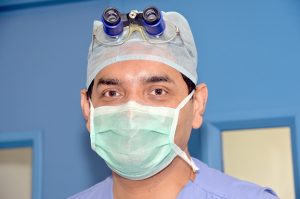
Ramesh Kekunnaya MD, FRCS
The COVID-19 pandemic in India provided an unexpected but timely opportunity to ramp up tele-ophthalmology applications in order to ensure that paediatric patients received appropriate care during the lockdown, according to Ramesh Kekunnaya MD, FRCS.
In a special webinar organised by the World Society of Paediatric Ophthalmology and Strabismus (WSPOS), Dr Kekunnaya, Head of the Child Sight Institute, L V Prasad Eye Institute, Hyderabad, India, said that COVID-19 fundamentally changed the practice from patient-centric to one based on “community-centric patient care”.
“It is really a question of health equity, of finding the means to reach out to these children in remote areas. Tele-ophthalmology is one option which makes it possible to provide eyecare for these populations and it is a valuable resource,” he said.
Although emergency category A cases were still seen straightaway during the crisis, those classified as category B could be managed purely by tele-consultations, said Dr Kekunnaya. These included indications such as follow-ups for refractive errors and amblyopia, post-surgical strabismus, paediatric cataract at six months, stable cranial nerve palsy, stable optic neuritis, accommodative esotropia, nystagmus, retinal dystrophy and low vision.
“There were also category C cases where we could reduce follow-up visits with intermittent tele-consultations such as stable optic neuropathies, resolving or resolved papilloedema, stable paediatric glaucoma follow-ups and stable ocular myasthenia,” he said.
Dr Kekunnaya’s hospital uses an online consultation service, LVPEI Connect, together with Tele Consults 2.0 software to set up appointments, access electronic medical records, with integrated payment options and sharing of selected information with the patient afterwards.
“We need three things to make this work properly for our paediatric patients: a vision application such as Peek Acuity, an interface such as Facetime or WhatsApp and finally the 9 Gaze application to document eye motility and strabismus,” he said.
Mobile phone networks have improved considerably in the past few years in India, said Dr Kekunnaya, and at least one person in every family usually has access to a personal cell phone.
In a one-month period from 21 April to 21 May 2020, the hospital used teleconsultations for 161 patients with a median age of 7 years. The breakdown of the consultation type was video calls in 14% of cases, review of photos sent in 53% and 33% were phone calls only.
“The phone calls only were because of connectivity and other issues. In terms of diagnosis, the most frequent issue was allergic conjunctivitis followed by pseudo-strabismus and refractive error. For 81% of patients who received a teleconsultation we could suggest a remedy or treatment and 19% had to come to the clinic,” he said.
While teleophthalmology offers a valuable tool to provide eyecare to remote and rural areas, there are some limitations to the technology, said Dr Kekunnaya.
“At the moment we cannot perform refraction for children and there will always be certain indications where an in-person consultation is necessary. For the future, we are looking at using an integrated application, ConnectCare, which will allow one interface for all our teleophthalmology consultations,” he concluded.

 Ramesh Kekunnaya MD, FRCS
Ramesh Kekunnaya MD, FRCS